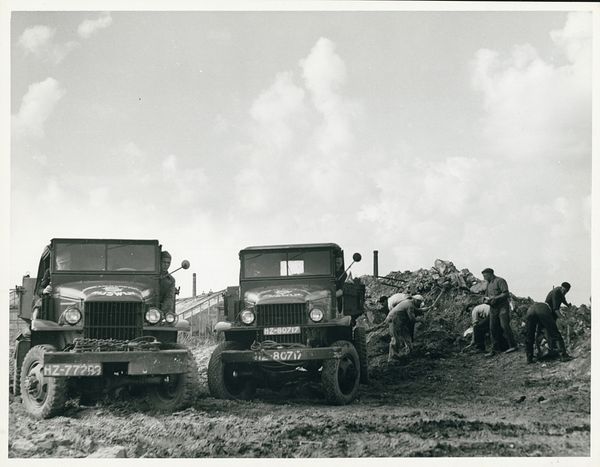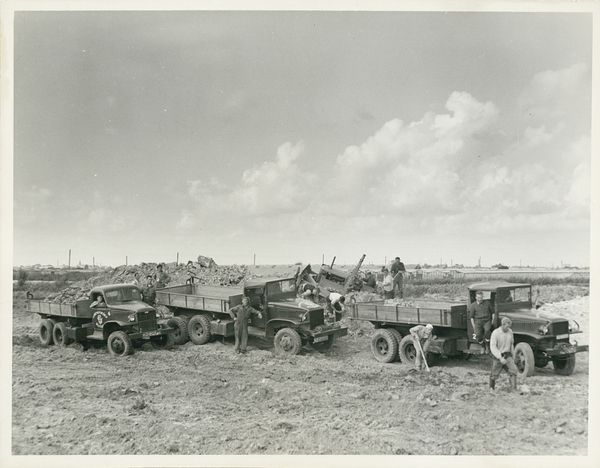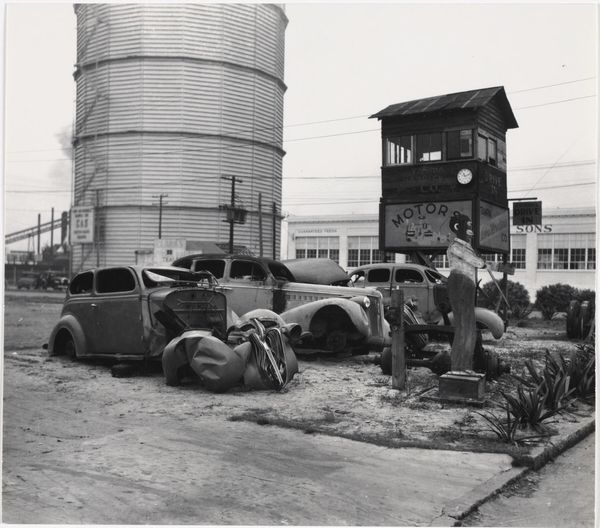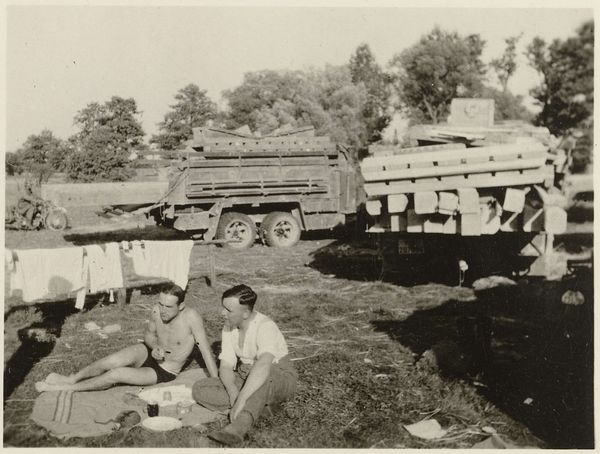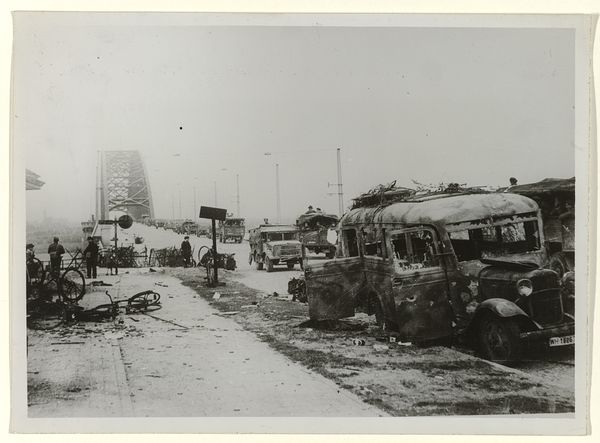
print, photography
# print
#
landscape
#
outdoor photograph
#
outdoor photo
#
archive photography
#
photography
#
historical photography
#
realism
Dimensions: width 24 cm, height 19 cm
Copyright: Rijks Museum: Open Domain
Editor: So, this photograph is titled "Jeeps uit de USA," created by the United States Information Service around 1946 or 1947. It's a black and white print, depicting jeeps being loaded near what appears to be greenhouses. It feels very much like a document of a specific moment, a glimpse into post-war life. What stands out to you most when you look at it? Curator: Immediately, I see a carefully constructed piece of propaganda, subtly showcasing American aid and influence. The very title, “Jeeps from the USA,” emphasizes the source of this machinery. Consider the historical context: post-war Europe desperately needed resources. This image, disseminated by the US Information Service, isn’t just about jeeps; it's about projecting an image of American strength and generosity in a period of rebuilding. Notice how the eye is drawn from the activity to the rows of greenhouses. Do you think this imagery suggests something about rebuilding and agriculture? Editor: I do see that. The greenhouses seem to hint at a future, a return to normalcy, enabled in part by these American vehicles. So, it’s less about the individual photograph and more about the message it's sending to a specific audience? Curator: Precisely. Think about where this image would have been circulated. Newspapers, magazines, perhaps even public displays. The goal was to shape public perception, demonstrating America's crucial role in the recovery. It raises questions about how the "realism" style of photography could itself be employed as a rhetorical device, masking a political agenda. Does the image still serve the intended function for current-day audiences viewing it in a museum setting? Editor: That's fascinating. I hadn't considered how much the photograph is working on a political level. It definitely makes me see it in a new light. I wonder, what is that the experience for current audiences in a museum. Curator: Exactly, how does the image get historicized into museum contexts, removed and abstracted from its moment of creation? I learned that it's about recognizing the layers of meaning embedded within what appears to be a straightforward snapshot of the post-war period. Editor: Right. Considering it in context like this makes it way more powerful. Thank you!
Comments
No comments
Be the first to comment and join the conversation on the ultimate creative platform.
